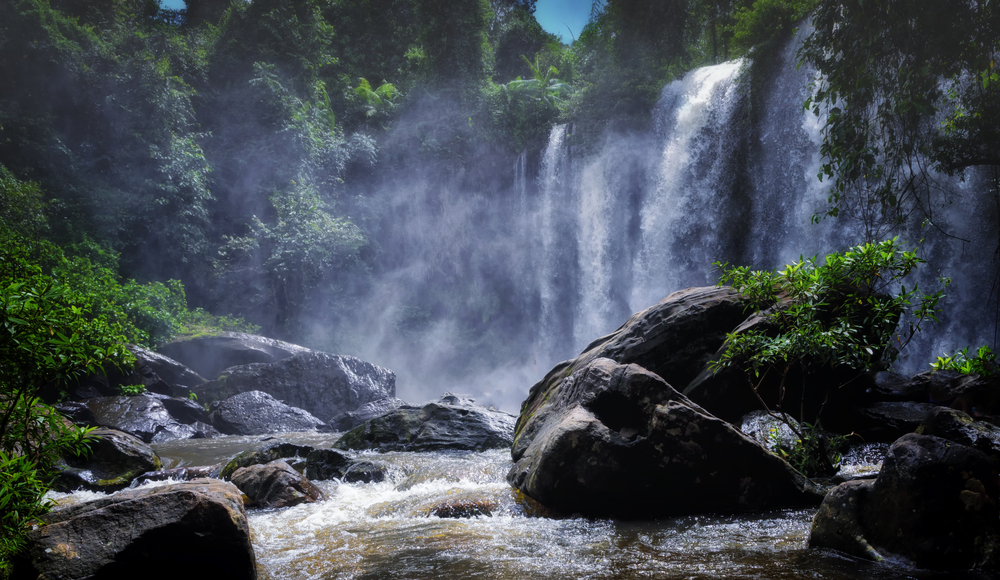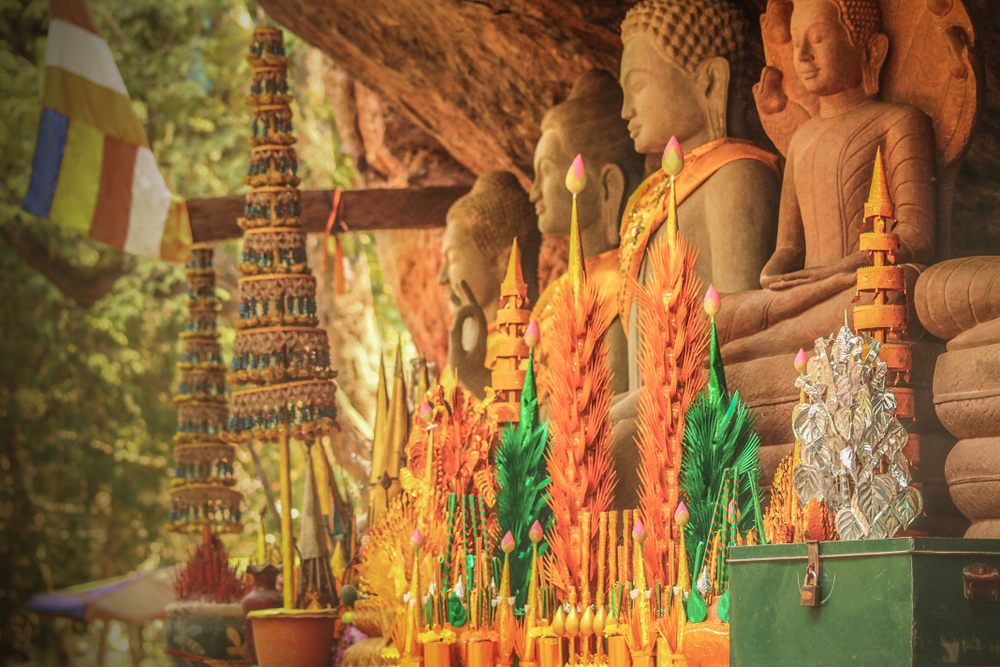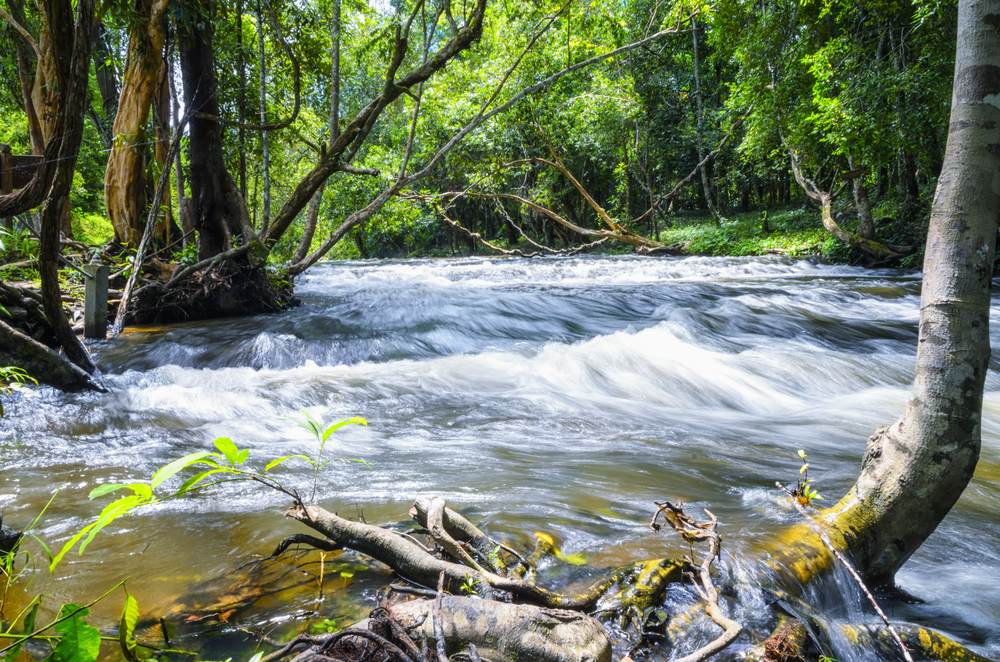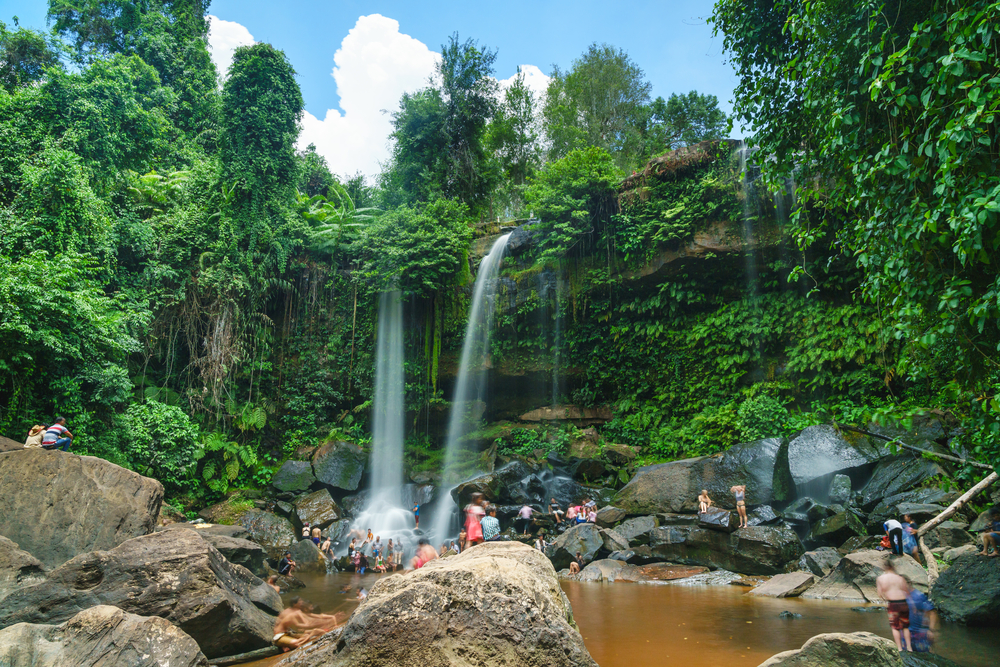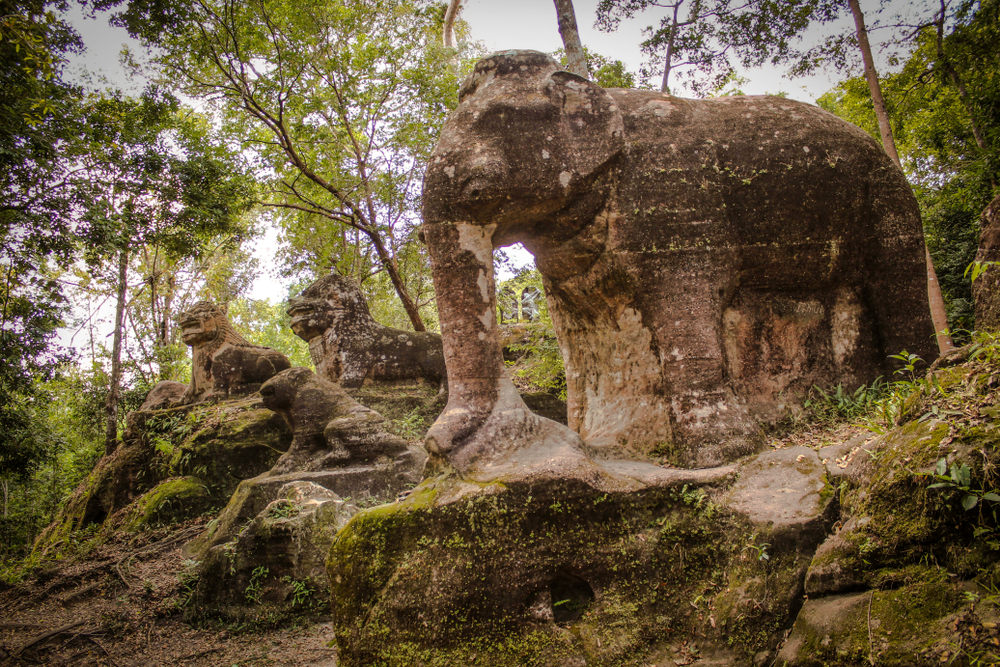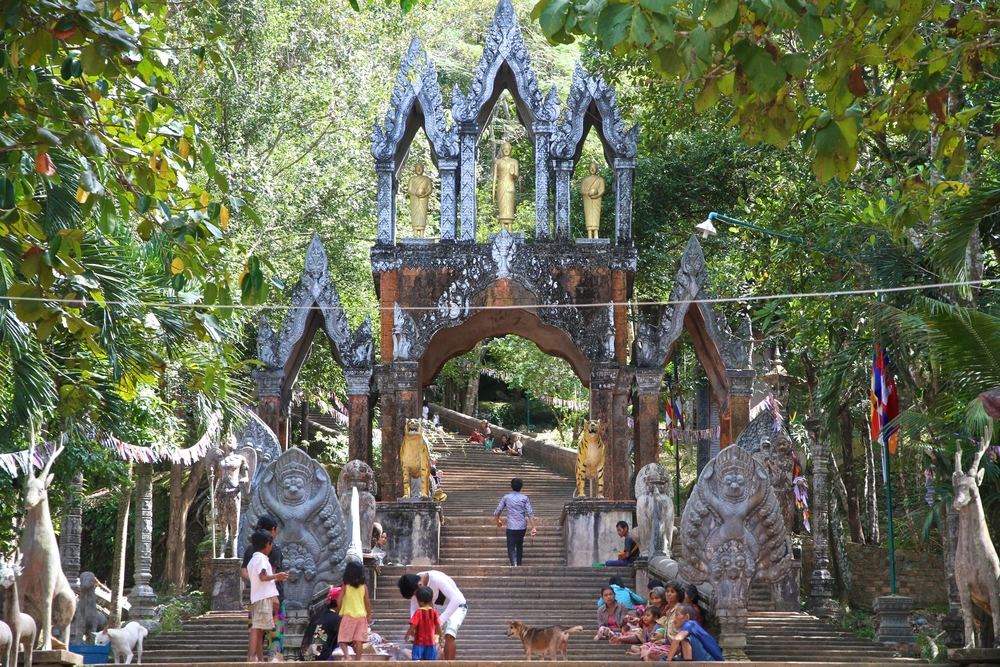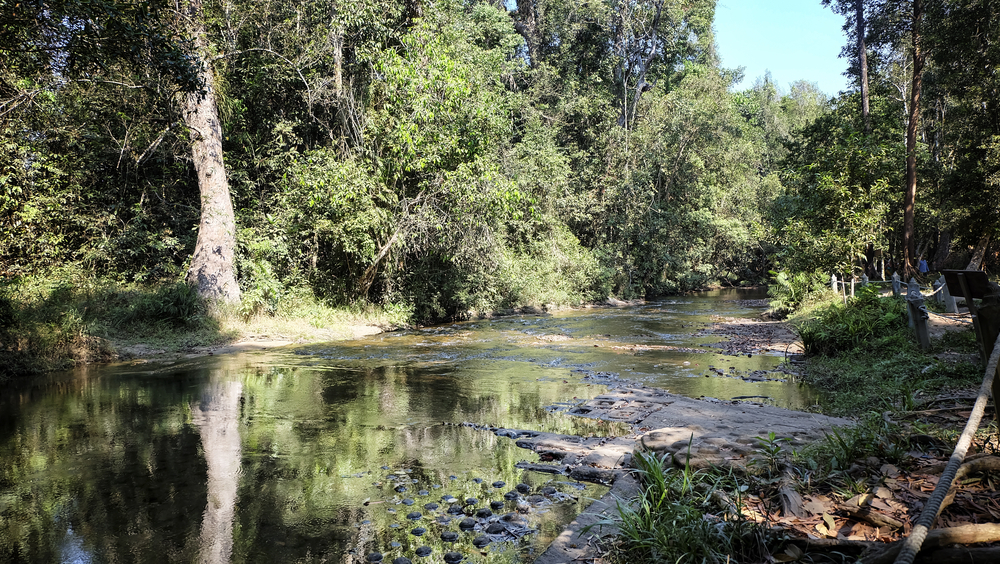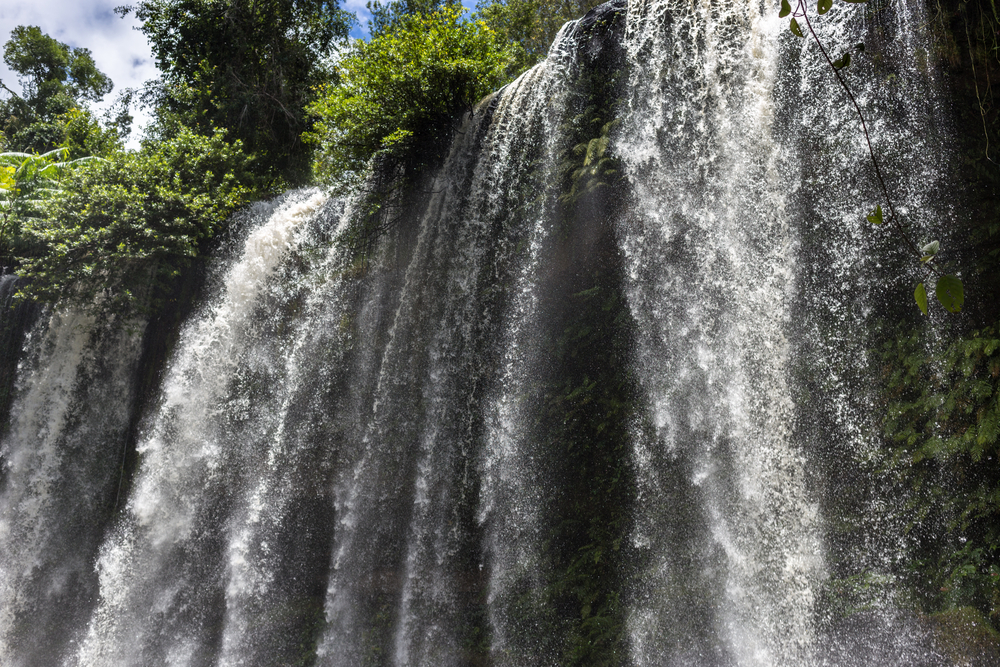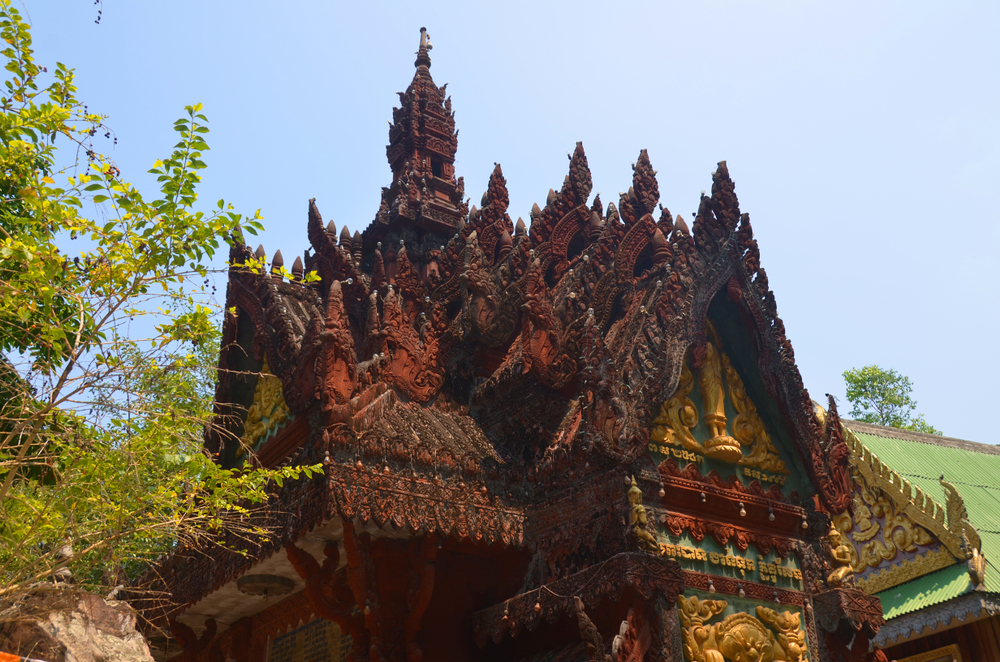Phnom Kulen Overview
Phnom Kulen National Park, located in Siem Reap Province, Cambodia, is a significant historical and natural site, about 48 kilometers (approximately 30 miles) from the renowned Angkor Wat. Established as a national park to protect its rich cultural heritage and natural beauty, it covers an area of approximately 373 square kilometers (about 144 square miles). Phnom Kulen, meaning “Mountain of the Lychees,” holds a special place in Cambodian history as the birthplace of the ancient Khmer Empire in the 9th century when King Jayavarman II declared independence from Java and initiated the Devaraja cult.
The park is renowned for its religious significance, featuring ancient temples, a thousand Lingas carved into the riverbed, and a giant reclining Buddha at Preah Ang Thom monastery, which is the largest of its kind in Cambodia. The lush landscape of Phnom Kulen is characterized by its dense tropical forest, waterfalls, and streams, offering a refreshing retreat from the Cambodian heat.
Among its natural attractions, the two-tiered waterfall is a popular spot for both locals and tourists, providing a serene setting for relaxation and picnics. The upper tier falls from a height of about 4-5 meters, while the lower tier cascades down from about 15-20 meters, creating a picturesque and inviting natural pool.
Phnom Kulen National Park is not only a place of natural beauty but also an archaeological treasure trove, with hidden ruins and relics scattered throughout the forest, waiting to be explored. The park’s significance in Khmer history, combined with its natural beauty, makes it a fascinating destination for those interested in Cambodia’s past and those seeking the tranquility of its landscapes.
Visitors to Phnom Kulen National Park can enjoy a day of hiking, exploring ancient ruins, swimming in the waterfall, and experiencing the spiritual and historical essence of Cambodia.
Park Map
Phnom Kulen National Park Highlights
Engaging Phnom Kulen National Park
Phnom Kulen National Park Trails
Sources
- Asia Package Travel, Phnom Kulen National Park, Cambodia, https://www.asiapackagetravel.com/blog/mysterious-beauty-of-phnom-kulen-national-park-cambodia.html, retrieved April 2024.
- Culture Trip, A Brief History of Phnom Kulen, the Most Sacred Mountain in Cambodia, https://theculturetrip.com/asia/cambodia/articles/a-brief-history-of-phnom-kulen-the-most-sacred-mountain-in-cambodia/, retrieved April 2024.
- Siem Reap, Phnom Kulen National Park, https://www.siemreap.net/visit/attractions/sightseeing/phnom-kulen/, retrieved April 2024.
- The Telegraph, Beyond Angkor: Inside the lost world of Phnom Kulen, https://www.telegraph.co.uk/travel/destinations/asia/cambodia/articles/Beyond-Angkor-Inside-the-lost-world-of-Phnom-Kulen/, retrieved April 2024.
- Tourism Cambodia, Phnom Kulen National Park, https://www.tourismcambodia.com/travelguides/provinces/siem-reap/what-to-see/78_phnom-kulen-national-park.htm, retrieved April 2024.








































































